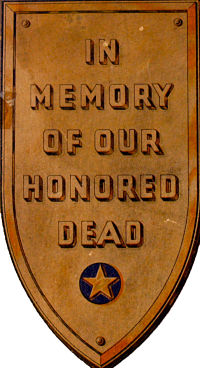BACK TO: Lawrence County Exhibit
Timeline 1930-1949 | Education 1930-1949 | Health 1930-1949 | War 1930-1949
TIMELINE 1930-1949
1930
Country sinking into economic depression.
Hawley-Smoot Tariff Act signed into law. Increasing protective tariffs.
1931
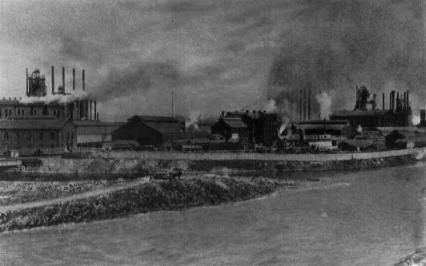
U. S. Steel closes its New Castle plant.
20,156 miles of local roads were taken over by the state as a part of Governor Gifford Pinchot’s program, “to get the farmers out of the mud.”
1932
Franklin D. Roosevelt elected president of United States 15,000,000 jobless.
1933
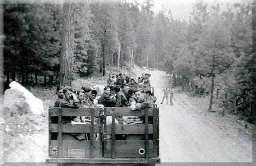
Civilian Conservation Corps (CCC) founded to provide jobs and education for young men and women.
Works Project Administration founded. Put men and women back to work.
Prohibition repealed. Union Brewing Company reopens.
1934
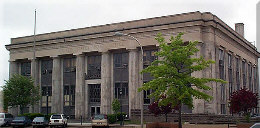
New United States Post Office opens on the square in New Castle .
Penn Power deeds Cascade Park to the city of New Castle.
1935
Demonstrators arrested during strike at Johnson Bronze for distributing Communist literature.
Social Security legislation was passed providing old age and survivor insurance.
1937
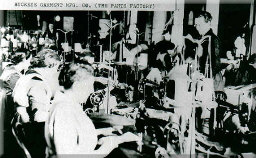
Sit-down strike at Pants Factory is settled.
New Castle High School defeats Paul Brown’s Massillon, Ohio, Tigers.
U.S. Steel (big steel) recognizes the labor unions.
Bloody riots breakout in Youngstown, as the CIO tries to organize little steel.
1938
WKST, New Castle’s first radio station goes on the air.
1939
Hitler invades Poland.
1940
Pennsylvania Turnpike completed from Carlisle to Irwin.
1941
Japanese attack Pearl Harbor in Hawaii beginning the United States’ involvement in World War II.
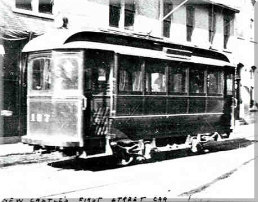
Streetcars stop running in New Castle.
1942
Alcoa moves into old tin mill.
United Engineering Company built new plant in New Castle.
1943
Lawrence County experiences a labor shortage as men are called into the armed service. Women join the work force in large numbers.
1944
G.I. Bill of Rights signed by President Franklin D. Roosevelt.
1945
War in Europe ends in May.
First atomic bomb dropped on Hiroshima Japan. Japan surrenders. World War II ends.
Alcoa Plant order closed by Department of Justice immediately after V-J Day.
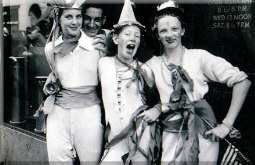
Downtown New Castle
When World War II ended, Lawrence County erupted in celebration. These young patriots participate in a Victory Day parade in downtown New Castle in 1945.
1946
Massive unemployment as men return home. Large scale housing shortage.
Soldiers returning from the war and their families created a housing boom that brought suburban life to Lawrence County.
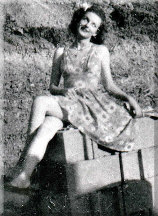
Suburbs begin to grow as new housing is constructed in the townships.
College and trade schools double and triple enrollments as service men go back to school under the G.I. Bill of Rights.
1947
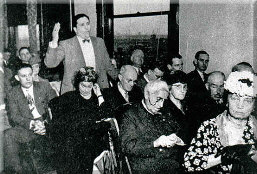
U.S. Steel threatens to leave Ellwood
After The U.S. Steel announced in 1946 that the National Tube Plant in Ellwood City would close, labor leader, and later State Senator, Samuel G. Neff addressed the U.S. Steel shareholders at their annual meeting to urge that the decision be reconsidered. Seated by Neff is United Steelworkers leader Martin Kovach. Note the expressions of boredom and impatience on the faces of the stockholders. The plant did not close until 1974.
1948
United Engineering and Foundry leaves New Castle.
EDUCATION 1930-1949
At the onset of the 1930’s, school township districts were thinking about consolidation. There were several drawbacks initially. Lack of adequate transportation, and roads that were impassable in the Spring. The city schools were so crowded that New Castle High School began having some students go to classes in the morning and others in the afternoon.
School construction had boomed in the 1920’s. New Castle built two junior high schools and new grade schools on the upper east side and upper north hill. All the townships had constructed new high schools.
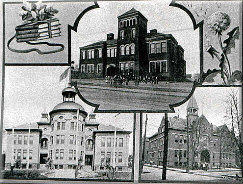
Ellwood City had built two elementary schools and a new high school. With the closing of the mills during the Depression, it looked like school expansion was over. Teenagers were dropping out of school to look for work to support their families. Others were too embarrassed by not having shoes or proper clothing to keep on attending school. Many travelled from town to town trying to find a job.
One of the most successful programs of the New Deal was authorized by President Franklin Roosevelt to handle this problem. He formed the Civilian Conservation Corp (CCC). It put the young men back to work at state and federal parks. They were housed in tents or barracks, fed well, and had plenty of clothes and shoes. The program also allowed the men to complete their high school education, learn a trade and even take college courses.
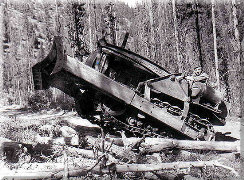
Governor Pinchot had authorized state funds to pave the roads. “Get the farmers out of the mud” had been his campaign slogan. The “Pinchot” roads were two lane macadam or they were covered with ash from the mills. Working on these roads provided employment for many. When the Works Progress Administration was signed into law, men also worked on streets and roads. Some worked on new school buildings or repairing and expanding older ones.
By the late 1930’s school buses were able to pick up children and bring them to more modern buildings in most townships. But Pennsylvania Law only stated that children were not to walk more than two miles to school or the bus stop. So many children still had quite a walk to catch the bus. In cities such as New Castle, the Mahoningtown students walked to George Washington Junior High School and New Castle High School, or if they could afford it, rode the city trollies or buses.
It was the G. I. Bill of Rights and the “Baby Boom” after World War II that effected the biggest changes in the schools.
As returning soldiers and their families were able to purchase or build their own homes for a very small down payment and low monthly payments, many decided to move to the suburbs. Others built new homes in the city. Schools were bursting at the seams. Shenango was the first to move towards total consolidation. They closed all of their one room schools and housed the overflow crowd in portable units around the high school.
It wasn’t long until the township schools merged with other nearby townships to create district schools.
HEALTH 1930-1949
In spite of the Depression, health care improved during this period. The Jameson Memorial Hospital opened in 1929, replacing the old Shenango Valley. It was a more up-to-date facility. The government also made a series of documentaries on health and exercise. These films explained proper diet, posture, and the benefits of an active life. Since the beginning of child labor laws and the eight hour day, there was the worry that the population would grow lazy.
Rural women still kept house much as they did in Civil War times. There was no electricity, running water, or indoor plumbing.
They had little time to worry about the dangers of idle hands. Their gardens and farm animals still made up most of their diet. They occasionally purchased canned goods at the grocery stores. But the city and country women now had the convenience of route salesmen. There was the Raleigh Man, the Fuller Brush Man, the bread man, and scores of others selling everything from patent medicines to baking needs. These companies also provided nutritional information.
Several years later, a vaccine was developed for whooping cough, tetanus and diphtheria. More people began using hospitals. Babies were very seldom delivered at home. The Mary Evans Maternity Hospital was opened in 1943. In the late 30’s and 40’s hospitalization insurance policies became more readily available.
Inoculations for childhood diseases began. Every child had to be vaccinated against smallpox before starting to school.
Medical research and science advanced during World War II. The wide use of sulfur drugs and penicillin for infections saved many lives. Blood plasma could be shipped and used everywhere — from the operating room at the Jameson Hospital to the beaches of Iwo Jima. Advances in science continued. We thought we were winning the war against disease. And we certainly had won some tough battles.
WAR 1930-1949
World War II

12,561 served.
423 never returned.
"Unless we remember, all was meaningless"
“I learned how to cherish. Leaving here, starting out in the world after getting out of high school, ending up in a war overseas by the age of 21, seeing what could happen because of a war. The destruction and what people had to go through as refugees because their homes were bombed and the lack of food. Then you come back here and not only kiss the ground, but cherish what you came back to. You hoped that it would never happen again.
Unless we remember, all was meaningless.
I hope we never let the younger people forget just for their own good. I think they can make a better world.”
– Frank Bonfield
"It took us five months
to escape"
“I made a number of flights to Yugoslavia. I went five times and I came back four. The fifth time, I walked back. We had to bail out where they are doing the fighting right now in Sarajevo. It took us five months to escape. The Yustashi caught me first. They were Yugoslavs who sided with the Germans. They clubbed me pretty good and left me laying. I don’t know why they didn’t bayonet me. They just rang my bell and knocked me out.”
Bob Shumaker said it right: When you hit the ground with your parachute, your troubles are just starting.
– Alan Barnette
“It was a different life. It was war life, It was scary. Every time we went on a war mission, the captain said, ‘may God be with you,’because you never knew if you were coming back.”
– Louis Perrott
Fighting on the front lines in Western Europe
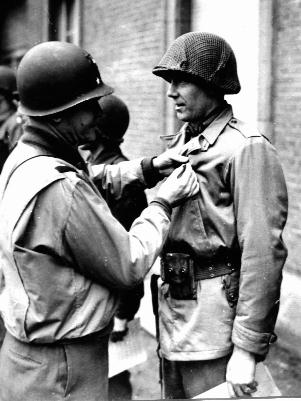
Master Sergeant Robert A. Myers is awarded the Bronze Star he earned while fighting on the front lines in Western Europe. Myers was the owner and director of Myers Funeral Home in New Castle.
"He was actually alive, but he was playing dead."
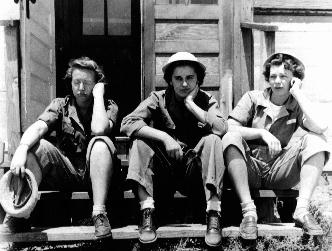
“D-Day, about five miles outside of Ste. Mere Eglise, we had one hell of a time. We hadn’t slept since midnight and you were too scared to sleep afterwards. Anyone who says they weren’t scared wasn’t in the invasion.”
“When we took Ste. Mere Eglise the next day, we found our paratroopers hanging from trees. One was hanging from the church steeple. He was actually alive, but he was playing dead.”
– Fran Doran
“The Rapido River ran north and south of the foot of Mt. Cassino. We used to refer to that as the ‘Bloody River’ because those infantry troops that were trying to take the mountain were just being torn apart.”
– Frank Bonfield
“Being homesick really isn’t funny. Every place you look, you think you see your mother or your dad or your brother or some of your playmates.”
– Robert Baldwin
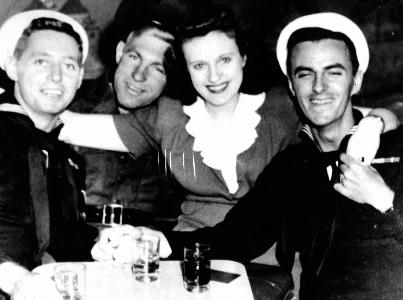
"This B-24 was called Joker"
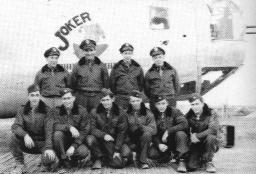
Joe Ross (top left), piloted this B-24, four-engine Liberator on 35 bombing missions over Europe in 1944 and 1945. The plane, the “Joker,” carrying a crew of ten, was struck by flak several times in raids over France, Germany, northern Italy, Yugoslavia, Romania, and Greece. Ross, an engineer, worked at the Johnson Bronze Co. and at Rockwell in New Castle.
"I'll see you at home"
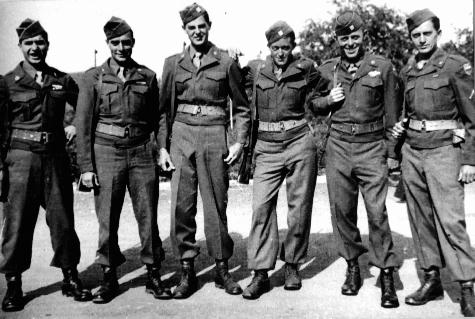
“I met my brother over in Italy. He was an infantry replacement. I met him north of Naples. His sergeant gave him a day pass and the two of us spent it in Naples. Later, in Northern Italy, he was coming by as a replacement. One of the guys from my outfit met him and said, ‘Hey Frank, that’s your brother on guard duty there on that checkpoint.’ I said, ‘you’re kidding.’ I jumped off the truck. We were only held up for a second. I couldn’t even talk to him. I just got a chance to wave at him and I said, ‘Well, I’ll see you at home.’”
– Frank Bonfield
MIA: a remarkable discovery 24 years later
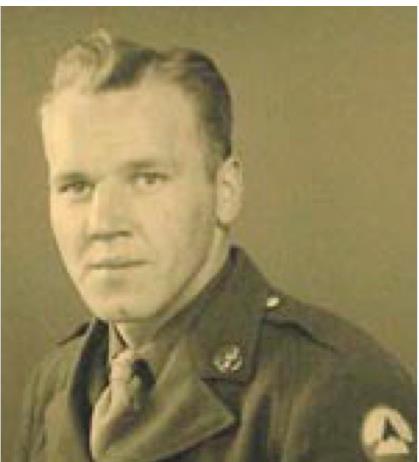
On February 6, 1945, PFC Hugh R. McCormick was reported missing in action when he failed to return from a reconnaissance mission patrolling the Meuse River in Holland. He was officially declared non-recoverable on November 22, 1950.
However, on July 27, 1969, his remains were discovered in a partially dry river bed by a Dutch female.
To read the remarkable circumstances surrounding the discovery, visit our blog post.
World War II
Roll of Honor
